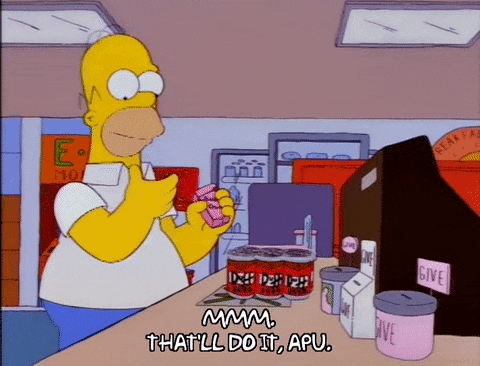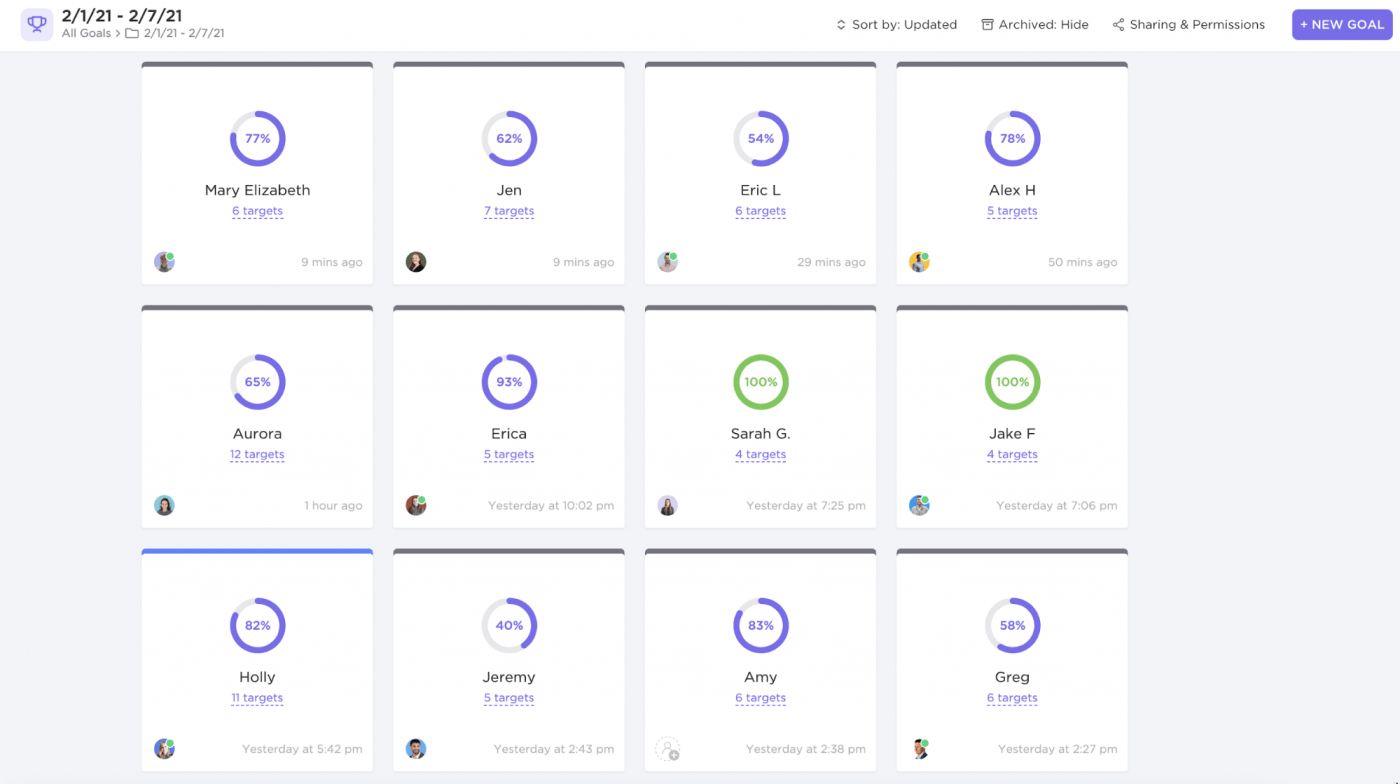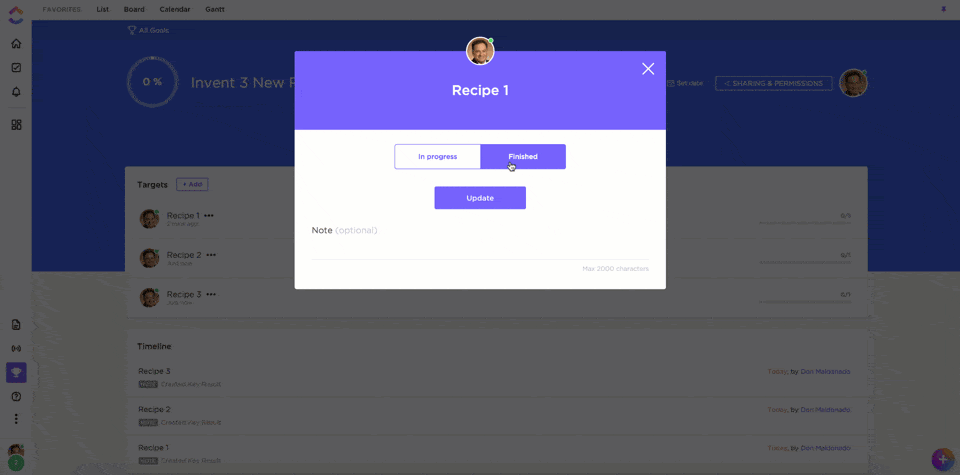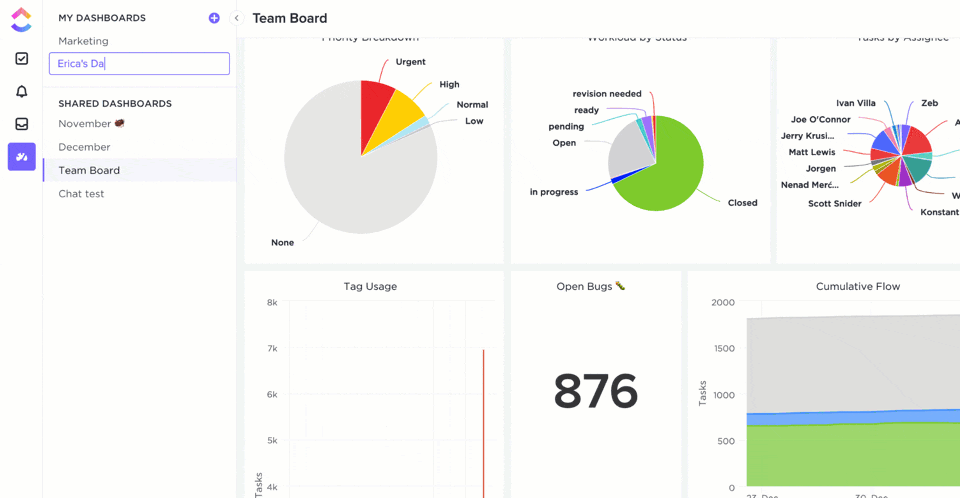10 Product OKRs Examples For 2025

Sorry, there were no results found for “”
Sorry, there were no results found for “”
Sorry, there were no results found for “”
Product management is not an easy job.
There are tons of things that can impact your product strategy. From new competitors to changing customer preferences, how do you make sure your product stays relevant?
Although product management is unpredictable, you can still predict your success through OKRs.
Looking for the perfect product OKRs?
In this article, we’ll cover what product OKRs are, go over ten fantastic product management OKR examples, and highlight the best project management software to help you manage and track those product OKRs.
Let’s get going!
We’ll begin by breaking down what OKRs are.
Contrary to popular belief, OKRs aren’t something Cardi B came up with.
They’re even better!
OKR stands for Objectives and Key Results.
The OKR framework focuses on goal setting and helps you create measurable outcomes that drive your company towards success.
An objective is where you want to be, and a key result is a strategy for how you’re going to get there.
Since OKRs are all about goal setting, OKRs for product managers must be about setting goals to make your product a success. The beauty of OKRs is that they can help you easily check off items on your product roadmap.
Speaking of which, take a look at some examples of OKRs that ClickUp uses!
Before we get into the product management examples, there are a few rules to writing meaningful OKRs.
Make sure your OKRs are:
Use a balanced scorecard template to identify your team’s OKRs!
Here are ten examples of product OKRs that will lead your product team to success:
Marketing OKRs help you with your product marketing strategy.
These goals focus on achieving product-market fit and making sure that customers know of your full line of products.

1. Objective: Implement a weekly newsletter successfully
Key Results:
2. Objective: Optimize our marketing funnel
Key Results
3. Objective: Improve brand engagement
Key Results:
Sales OKRs are goals that any product leader needs to have.
Why?
Sales OKRs are your money-makers!
They aim to get people to buy your product.

Here are two examples:
4. Objective: Successfully launch the second version of our main product by the start of the second quarter.
Bonus: Product Launch Templates
Key Results:
5. Objective: Increase the nationwide reach of our product by 50% by the first quarter of the following year
Key Results:
6. Objective: Successfully participate in 10 trade events this year
Key Results:
Customer OKRs are goals that make your customers want to stay with your product.
Goals such as keeping your customers happy, and providing the right products will make customers fall in love with your product!
And ideally, even obsess over them…

Here are two examples:
7. Objective: Improve customer satisfaction by 45% by the third quarter
Key Results:
8. Objective: Improve customer engagement by 50% by the third quarter
Key Results:
Employee engagement OKRs aim to improve the performance and engagement of your product team.
Product team OKRs can include improving team synergy or training your sales team to learn all sorts of cool tricks to promote your product:

Here are two examples:
9. Objective: Improve product team learning by 45% by the end of the year.
Key Results:
10. Objective: Improve the performance of our product team
Key Results:
Fantastic!
You now have a list of objectives and a strategy to achieve them.
But that’s not where it ends.
To make sure your product strategy is a success, you need to manage and track those OKRs.
So, how do you do this?
Unfortunately, just carrying a list of OKRs with you isn’t going to get you very far…

An OKR tool is going to help get much farther!
OKR software like ClickUp can help you set, track, and manage all your product OKRs.
Additionally, they can help you communicate your product goal to the entire company so all your employees can align their team-based goals with the overall company objective.
Here’s how ClickUp can help product teams:
Goals are high-level containers that can be broken down into smaller, measurable Targets.

Since OKRs are all about planning ahead, let’s clear up some confusion that might occur ahead:
It’s also super easy to set product OKRs in ClickUp:
Go to “Goals” in ClickUp and create a new Goal by clicking the “+ New Goal” button.

It sure is 🍋
You can also edit details about your Goals:

Want to know how to set effective team goals? Here are 7 steps to efficiently set team goals.
Once you’ve set your objective, you need to come up with a few key results.
You can do this by clicking on the “Add Target” button.
You’ll then find your Targets right below your overall Goal.

You can also edit details about your Targets like:
Here are the different types of Targets:
This way…

Once your Goals (objectives) and Targets (key results) are ready to go, you need to track your progress towards those OKRs.
Here’s what you can track:
1. Your progress for each Target (key result)
For example, if your Target is to get published product reviews in 10 publications by March 2021, you can track how many publications your product has appeared in so far.
2. How your Target progress has contributed to your Goal’s (objective) progress
For example, if you’ve completed less than a quarter of your targets so far, your OKR Goal progress will be 20%.

But why do you need to track your progress?
Without progress tracking, you’ll never know if you’re even getting any closer to your Goals:

While that little guy takes a stroll, let’s talk about how Agile teams (the most successful teams in the world) can also use ClickUp to monitor the progress of an Agile Sprint Goal.

Here’s how you can do it:
This way, your product owner and Scrum team can see their Goal progress update in real-time.
ClickUp has Product Dashboards to help you plan, track, and assess your Goal progress through completed tasks and time tracked on projects.

You can also add Custom Widgets to your product Dashboard.
Widgets give you detailed insights into tasks, Sprints, people, and projects.
Here’s a list of some of the Widgets you can choose from:

Still confused about all the different kinds of OKRs out there?
Let’s answer a few questions you might have:
Here are four key types of OKRs that you need to know:
To have an effective OKR process for your product team, follow these steps below:
Although there is no set rule for how many OKRs a product team should have, we recommend setting 2-5 OKRs per quarter. Make sure your OKRs are measurable, time-bound, and specific!
Not sure how to write OKRs? Here’s how to write effective OKRs.

Here are the main differences between OKR and MBO:
| Parameter | OKR | MBO |
| Meaning | Objectives and Key Results | Management by Objectives |
| Focus | The OKR process focuses on the “what” and “how” | MBO focuses solely on the “what” |
| Timeline | Monthly or quarterly | Annually |
| Approach | OKRs are public, transparent and widely communicated | MBOs are siloed and private |
| Methodology | The OKR methodology consists of objectives that have key results under them. | Set company objectivesCommunicate objectives to employeesMonitorEvaluate performanceReward performance |
| Compensation | Usually not tied to compensation | Tied to compensation. For example, bonuses. |
| Type of goals | OKRs more ambitious and aspirational | Similar to a KPI, MBO avoids risks and focuses on realistic goals |
Also learn more about the differences between KPIs and OKRs.
Product OKRs help you determine goals and devise a way to achieve them.
They also help you track your progress since once a key result is completed, you’re one step closer to reaching that goal.
Building a product roadmap that follows the OKR structure also helps teams focus on building things that matter most.
But, as we all know, humans are forgetful, and sometimes we all need a little motivation.
Luckily, an OKR product management tool like ClickUp is all you need to remind and motivate you!
With built-in Reminders, Recurring Tasks, and Agile Sprints, you’ll be crushing all your product OKRs like nobody’s business.
Get ClickUp for free today to take your product to the next level! 📈

© 2025 ClickUp